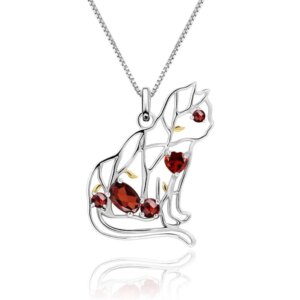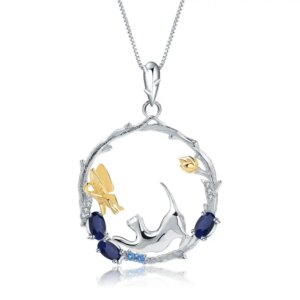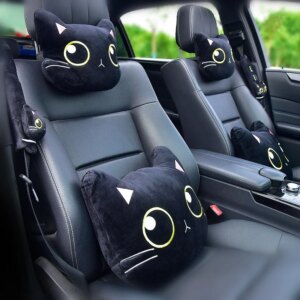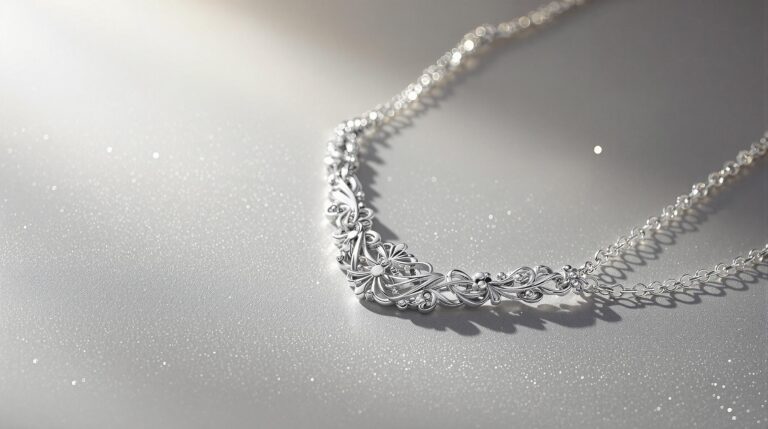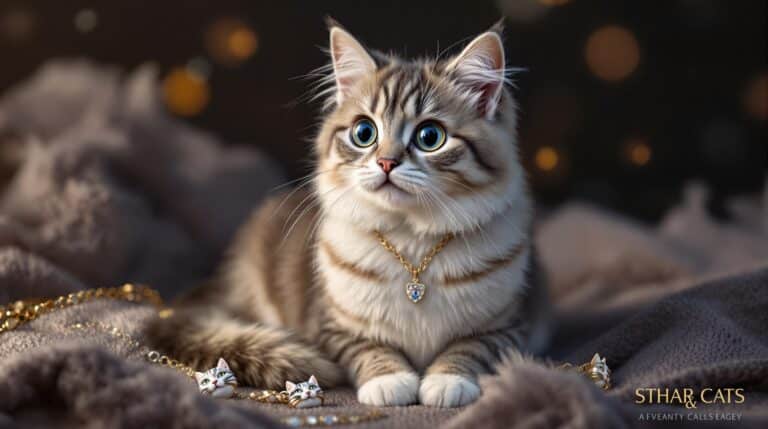Cats tail meanings can provide valuable insights into their emotions and behaviors. At Cat Karma Creations, we believe that understanding your cat’s tail language can help you strengthen your bond and ensure a happier, healthier relationship. Discover the secrets behind your cat’s tail and unlock a deeper connection today. Visit our website to find unique cat-themed gifts and jewelry that celebrate the special bond you share with your feline friend.
Introduction to Cat Tail Language
The Importance of Tail Language
At Cat Karma Creations, we know that cats use their tails as a primary means of communication, much like humans use facial expressions and body language. Understanding cat tail language can help you interpret your cat’s emotions and intentions more accurately. For example, a cat’s tail can indicate whether they are feeling happy, anxious, or aggressive. By recognizing these signals, you can respond appropriately and avoid misunderstandings. If you have any questions or need advice, feel free to contact us.
Common Tail Positions and Movements
Cats exhibit a wide range of tail positions and movements, each with its own meaning. Some common ones include a high tail, which indicates confidence and happiness, and a low tail, which often signals fear or submission. Other movements, such as tail flicking and twitching, can reveal more subtle emotions. By familiarizing yourself with these signals, you can better understand your cat’s needs and improve your communication with them. Our cat-themed jewelry can be a beautiful way to show your love for your feline friend.
Understanding Different Tail Positions
Tail Held High
When a cat holds its tail high, it is a sign of confidence and happiness. This position is often seen when a cat is greeting you or exploring a new environment. A high tail can also indicate curiosity and excitement. If your cat’s tail is held high and straight, it is a good sign that they are feeling positive and content. However, if the tail is slightly curved at the tip, it may indicate a more playful mood. Our jewelry collection includes pieces that capture the playful spirit of your cat.
Tail Low and Tucked
A low tail, especially one that is tucked between the legs, is a clear sign of fear or submission. This position is often seen when a cat feels threatened or anxious. It can also indicate that your cat is feeling unwell or in pain. If you notice your cat’s tail in this position, it is important to provide a safe and quiet space for them to retreat to. Avoid forcing interactions and give them time to feel secure. For more tips on cat care, visit our blog.
Tail Curved
A curved tail can have different meanings depending on the context. When a cat’s tail is curved into a question mark shape, it often indicates a playful and curious mood. This position is common during playtime and when a cat is exploring something interesting. However, if the tail is curved downward and the cat is crouched, it may indicate aggression or defensive behavior. Observing the rest of your cat’s body language, such as ear and whisker positions, can help you better interpret their mood. Our nature-inspired jewelry can complement your cat’s playful and curious nature.
Interpreting Tail Movements
Tail Wagging
Tail wagging in cats is different from dogs and can have various meanings. A cat’s tail wagging side to side often indicates excitement or happiness. This movement is commonly seen during playtime or when a cat is greeting you. However, if the wagging is more rapid and intense, it can also indicate frustration or agitation. Pay attention to the context and other body language cues to determine the exact emotion your cat is expressing. Our sterling silver jewelry can be a beautiful way to celebrate your cat’s unique personality.
Tail Flicking
Tail flicking is a subtle movement that can reveal a lot about a cat’s emotional state. Quick, sharp flicks of the tail often indicate irritation or anxiety. This movement is common when a cat is about to pounce or during play. If you notice your cat flicking their tail, it’s a good idea to provide a quiet space and avoid overstimulating them. Understanding these signals can help you avoid stressing your cat and improve your interactions. For more insights, follow us on Facebook and Instagram.
Tail Twitching
Tail twitching involves rapid, small movements and can indicate a range of emotions. In some cases, it may signal excitement or anticipation, such as when a cat is waiting for something or about to pounce. However, if the twitching is more pronounced and continuous, it can also indicate frustration or agitation. Offering a distraction or creating a calm environment can help your cat relax and feel more at ease. Our Wrap Around Cat Ring can be a perfect gift for cat lovers.
Tail Language in Different Scenarios
During Playtime
During playtime, a cat’s tail language can provide valuable insights into their mood and intentions. A high, wagging tail often indicates excitement and a willingness to engage in play. However, if the tail starts to flick or twitch, it may be a sign that your cat is becoming overstimulated or frustrated. Pay attention to these signals and adjust the intensity of play accordingly to keep your cat happy and engaged. Our Cat Pose Yoga Block can be a fun addition to your playtime routine.
When Greeting You
When a cat greets you, their tail language can tell you a lot about their emotional state. A high, curved tail is a positive sign that your cat is happy to see you and is in a friendly mood. If the tail is held low or tucked between the legs, it may indicate that your cat is feeling anxious or unsure. Taking a moment to greet your cat calmly and gently can help them feel more at ease and strengthen your bond. For more tips, visit our blog.
In Social Interactions
In social interactions with other cats, tail language plays a crucial role in communication. A high, straight tail often indicates confidence and a dominant position, while a low, tucked tail can signal submission. Tail movements, such as flicking and twitching, can also reveal a cat’s emotional state during these interactions. Observing these signals can help you understand the dynamics between your cats and ensure a harmonious environment. Our Meditation Cushion with Cat Design can help you create a peaceful space for your cats.
| Feature | Tail Wagging | Tail Flicking | Tail Twitching | Tail Curling |
|---|---|---|---|---|
| Emotion | Excitement, Happiness | Irritation, Anxiety | Frustration, Excitement | Contentment, Relaxation |
| Behavior | Tail moves side to side | Quick, sharp movements | Rapid, small movements | Tail forms a curve |
| Common Scenarios | Greeting, Playtime | Before pouncing, During play | Waiting, Anticipation | Relaxing, Sleeping |
| Owner Response | Engage in play, Offer treats | Provide a quiet space, Avoid overstimulation | Offer a distraction, Calm environment | Pet gently, Show affection |
Understanding the basics of cat tail language can enhance the bond between you and your cat. Different tail positions and movements can indicate a wide range of emotions, from happiness to anxiety. Respecting your cat’s tail signals can help prevent misunderstandings and improve communication. Tail language can vary between different cat breeds, so it’s important to observe and learn your cat’s unique behaviors. Changes in tail behavior can be an early indicator of health issues, making it a valuable tool for cat owners. Teaching children to read cat tail language can promote safe and respectful interactions with pets. For more information, visit our website or contact us at (800) 343-1604.
Understanding the meanings behind your cat’s tail movements is a powerful tool for improving communication and strengthening your bond. By paying attention to these subtle cues, you can better meet your cat’s needs and ensure a harmonious relationship. Whether you’re a seasoned cat owner or a new pet parent, learning to read your cat’s tail language is a valuable skill that will enrich both your lives. Visit our website to find unique cat-themed gifts and jewelry that celebrate the special bond you share with your feline friend. Follow us on Facebook and Instagram for more tips and inspiration.
Popular Quote
“A cat has absolute emotional honesty; human beings, for one reason or another, may hide their feelings, but a cat does not.”
— Ernest Hemingway
Statistical Fact
According to a study published in the Journal of Veterinary Behavior, 70% of cat owners report that understanding their cat’s body language, including tail movements, has significantly improved their relationship with their pets. This statistic highlights the importance of paying attention to your cat’s non-verbal cues to enhance your bond and ensure a happier, healthier relationship. (Source: Journal of Veterinary Behavior)
Three Tips for Understanding Your Cat’s Tail Language
- Observe Your Cat’s Environment: Pay attention to the context in which your cat displays certain tail positions and movements. This can help you better understand their emotional state and respond appropriately.
- Learn Your Cat’s Unique Signals: Each cat has its own unique way of communicating. Spend time observing your cat’s tail language to recognize their specific signals and what they mean.
- Use Positive Reinforcement: When you notice positive tail signals, such as a high, wagging tail, reward your cat with treats or playtime. This can reinforce good behavior and strengthen your bond.
Popular Questions About Cat Tail Language
- What does it mean when a cat’s tail is puffed up?
A puffed-up tail is a sign of fear or aggression. This position is often seen when a cat feels threatened and is trying to make itself look larger to intimidate a perceived threat. - Why do cats tuck their tails between their legs?
Tucking the tail between the legs is a sign of fear or submission. This position is often seen when a cat feels threatened or anxious and is trying to make itself appear smaller and less noticeable. - Can a cat’s tail position change suddenly?
Yes, a cat’s tail position can change suddenly in response to changes in their environment or emotional state. It’s important to observe these changes and respond accordingly to ensure your cat feels safe and secure.
Final Thoughts
Understanding your cat’s tail language is a valuable skill that can greatly enhance your relationship with your feline friend. By recognizing and responding to their tail signals, you can better meet their needs and ensure a harmonious and happy home. If you have any questions or need further advice, don’t hesitate to contact us. Visit our website to explore our collection of unique cat-themed gifts and jewelry, and follow us on Facebook and Instagram for more tips and inspiration.

